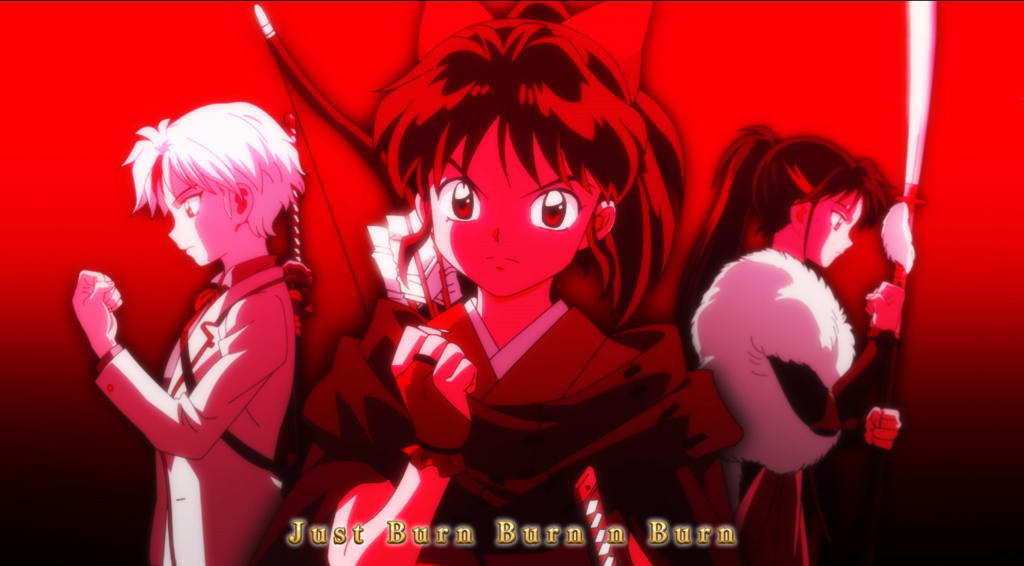
“Towa and Setsuna. Between us half-demon twins, two different worlds exist at the same time. Human and Demon. Feudal era and present day. Peacefulness and war. Joy and sorrow. Dreams and reality. One moment and eternity. And finally, love and hate.”
- Towa Higurashi
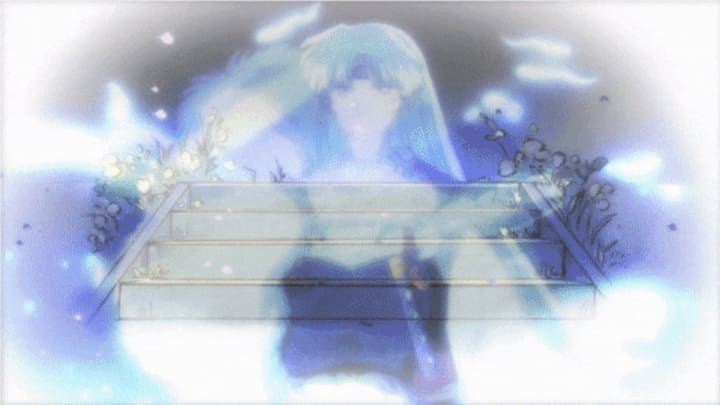
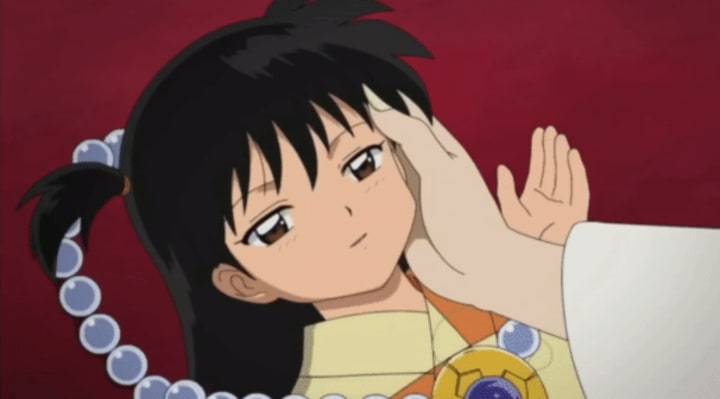
In the opening's first moments, we get a few flashes of key Sesshomaru and Rin moments. First a close-up of his contemplative expression from The Final Act ending 1, “With You” by AAA followed by fundamental milestones of Sesshomaru’s change of heart throughout the series: (1) Rin’s expression upon her second revival; (2) Sesshomaru’s battle with Magatsuhi (episode 19 of The Final Act); (3) and highlights of “Sesshomaru in the Underworld” (episode 9 of The Final Act) superimposed in the background of Rin and Sesshomaru’s twin daughters, Towa and Setsuna, as they sit on a shallow set of stairs respectively.


From there, the scene is transitioned by the falling petals to Moroha sitting on the same set of stairs, as the most tender InuKag moments are superimposed faintly. These include their (in)famous almost-kiss interrupted by (to-be) Papa Sota as well as the glorious moments of victory against Naraku, highlighting Kagome’s signature sacred arrow.

While the title card declares “Hanyo no Yashahime” in the most epic fashion, we see montages of the Yashahime’s shenanigans, accompanied by various differing supporting characters in each frame: First Myoga, then Kaede, concluding with Takechiyo – all of whom play key supporting roles, but also, largely informational ones too.


Opposites and contrasts are undeniably a major theme of Yashahime. The new opening pays special attention to this as we next see Sesshomaru and Jaken standing from behind, both are staring at the underworld on a large rock, paying homage to the impactful sentiments of Sesshomaru’s iconic "Fukai Mori" (ending 2 of the original series). The camera pans counter-clockwise (to the right) observing Sesshomaru and Jaken, only to be abruptly surprised by InuKag, where the camera mimics this same movement but in the opposite direction. It’s especially important that they juxtaposed two demons contemplating in the underworld with two beings of the mortal world on earth in nearly identical positions, playing up the themes of duality.

Thereafter, the audience is bombarded with splashes of our ensemble cast. First, we observe the Higurashis on the right-hand side of the frame from an overhead perspective; this is followed by a cut to Kohaku’s demon slayer crew on the left-hand side with a side profile view alongside Hisui; and lastly, switching back to the right-hand side of the screen, we meet Sango and Miroku, who are seen alone peacefully together by the waterfall as Miroku meditates on top of a rock and Sango looks up to him gently. There are a few things to highlight here, namely that the perspective of the spectator is slowly descending – beginning with an overhead view of the Higurashis to an eye-level profile of the demon slayers, to a slightly lower angle profile of Sango and Miroku. The montage itself embodies a plethora of contrasts and duality. We see the peacefulness of the modern era (Higurashis smiling), then the embodiment of feudal era damage control in the demon slayers (in a serious stance), who employ relatively aggressive and violent tactics to reach peace, only to be followed up again by a combination of the former two: Sango, a skilled demon slayer and Miroku, a serene Buddhist monk. As the audience knows, both Sango and Miroku share a deep love and strong relationship, furthering the beauty of such stark opposites and their complex combinations. The additional irony is that in the frames of Sango and Miroku, it is Sango (from a more "turbulent" demon slayer background) who looks comparatively more peaceful and gentle than Miroku, practising the embodiment of tranquillity in Buddha.

The subsequent scenes cut to rapid movements of Kirinmaru approaching the spectator, grabbing the lens, transitioning to Riku, holding a sword, resembling that of European origins – the appearance is unlike that of a conventional Katana. This may either relate to or reference his statement in his first encounter with Towa, where she gifted him an apple and he responded, stating that she had fed him the “forbidden fruit,” (in English) referencing a Western concept that would likely be uncommon, if not, completely foreign and unknown to the Sengoku period (episode 7).

The dream butterfly overtakes the next transition, sliding a dark view of the sacred tree swarmed by multiple butterflies and bright red flowers. The butterflies lead the audience to our main trio, as we follow one fluttering towards a lone Towa, who reflects in deep thought as she presses her hand against the sacred tree, similar to how Kagome had in countless anime adaptations. One prominent instance can be highlighted in InuYasha Movie 1: Affections Touching Across Time.




Naturally, the movie title is extremely suiting to the original InuYasha franchise, referencing the stunning chemistry between the main couple, InuYasha and Kagome. Retrospectively, this prominence plays a big role in Yashahime too. It’s just that these “affections touching across time” are far from a romantic nature as depicted in InuKag and recentre their focus alongside a sense of belonging and familial bond – embodying Towa’s longing for her twin sister and the sense of otherness she felt in the modern era. As the butterfly and camera pan to the right, the same butterfly enters a new frame in a fluid motion to introduce us to Setsuna and Moroha, leaning with their backs against the tree. This establishes two key takeaways: (1) that they’re not at the tree at the same time as Towa, as the ornament only hangs on the tree in the modern era, hence the girls are there in the Sengoku period; and (2) the influence of their upbringing on their personalities. Towa faces challenges head-on and embraces her emotions, especially having grown up in peaceful times. She feels comfortable forward-facing the tree fully.


On the contrary, Setsuna and Moroha had contrastingly less bright childhoods. Their abilities to express their emotions and strong tendencies to conceal them are staunchly depicted in how they face their backs against the tree, attempting to hide any points of vulnerability. Again, more parallels in the contrasts of Yashahime.

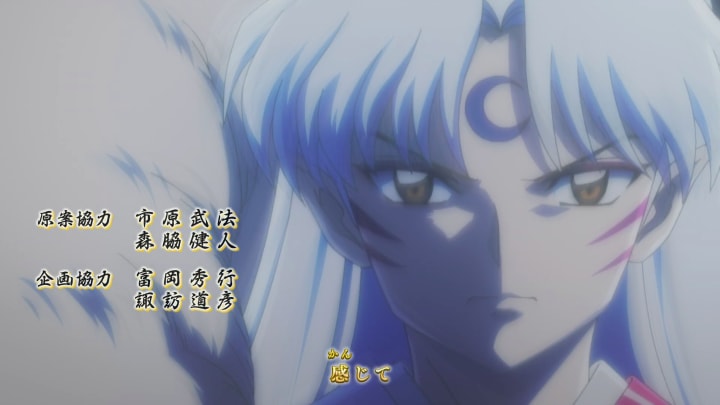
Unexpectedly, we cut to Rin, who is floating in stasis inside the sacred tree, sound asleep, immediately juxtaposed with an aggressive action shot close-up of Sesshomaru’s face, filled with conviction.
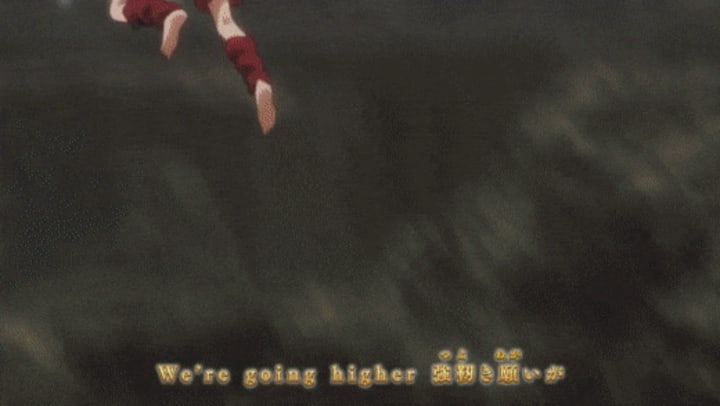

As the chorus plays, “we’re going higher,” the camera follows Moroha, panning up as she unsheathes her sword to battle Totetsu along a mountainous landscape. The audience is then treated to a singular burst of Sakuga* where Towa follows suit to battle Konton, and last but not least, we witness Setsuna administering her Scourge of Swallows to the “Beautiful Mystery Demon,” named Zero. Zero closes the gap between her and Setsuna, closing in uncomfortably towards her face, only to be interrupted by another close-up of Kirinmaru, who is overlooking the three battles at a higher altitude, as indicated by the camera’s hasty pan upwards.
*Sakuga: (作画) (lit., "drawing pictures") is a term used in anime to describe moments in a show or movie when the quality of the animation improves drastically, typically for the sake of making a dramatic point or enlivening the action ("Sakuga Animation in Anime" via Liveabout).

This reminds me a lot of how Yotsume was observing the events of Roothead's attack as we discovered in the first episode. In that same vein, we assume the three Yashahimes are fighting their own battles, only to discover another third-party onlooker who rests above the carnage. The three Yashahimes are shown heavily exhausted, but still glazed with the conviction of a compelling fighting spirit as they square their opponents.
We then indulge in another rapid burst of montage for each character, highlighting the key moments of each Yashahime – recapping previous significant scenes and introducing new ones:
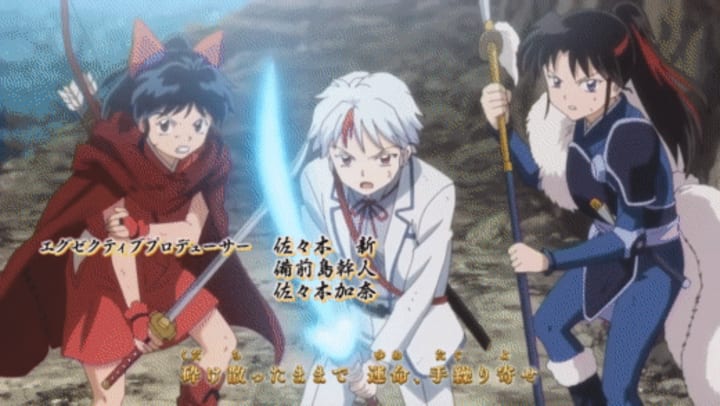
First, Towa is depicted in an electric blue outline on the right-hand side, superimposed with her human form on the left. This is swiftly followed by an expression of extreme anger, captured in her face-off with Homura upon discovering that he was the reason for their sibling separation (episode 14).

The classic forest fire memory plays again as the scene cuts to Moroha, depicted in a crimson red outline on the left. She’s seen biting down in discomfort as an unknown light-haired character is superimposed in the background, laying on the ground with scratch marks on their face. We witness Moroha embrace this being, who is clothed in armour, evidently wounded, and wearing leg warmers. This is new footage for the audience that had not yet been depicted in an episode (as of episode 14), creating further speculation for Moroha’s mysterious past and what her other relationships outside her cousins may look like.

Lastly, Setsuna concludes the montage, depicted in neon yellow on the right-hand side, gripping her Naginata. Like her sister, the forest fire scene plays out and we see remnants of her father’s goodbye to the twins as infants.

Subsequently, the three Yashahimes run on an unsteady mountainous path, leaving Setsuna to lose her grip as the cliff collapses and Towa unsuccessfully attempts to grab her, mirroring their premature separation in the forest fire ten years ago. As Setsuna continues to descend, we see her silhouette cascade into a body of water as her ponytail undoes itself simultaneously, freeing her of any constraints. This scene is particularly important as the anime had yet to show Setsuna’s hair down. Comparing Setsuna to Sango, a notable female who also frequented sporting a demon slayer outfit with a high ponytail, Sango also had a "leisurely" outfit consisting of a traditional kimono and mobakama (裳袴) in addition to her work uniform. Unlike Sango, Setsuna is never depicted in this type of outfit at age 14. She is purely seen in her demon slayer outfit, indicating her constant state of alertness – the inability to literally let her hair down and unwind in one of the most basic outlets of self-expression and freedom: apparel and style.
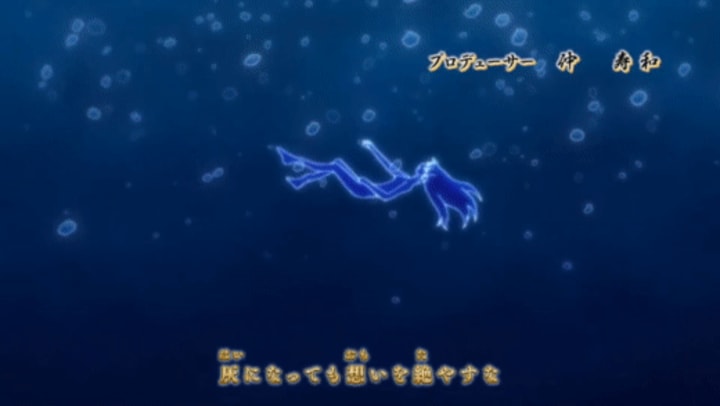
The silhouette’s descent begins to slow down, and she is caught gently by a bright presence of Rin who lovingly embraces her. This characterizes and foreshadows many of the human aspects of Setsuna, who is largely considered a copy of her father’s stoic coldness. Only in these scenes where Setsuna’s expressions are unseen (to the spectator) as a silhouette, can she truly embrace her human side – especially in the comfort of her own mother. Here, we see her at her most vulnerable end, hinting at notions of "what it means to be human" as she enjoys letting her hair run wild for the first time in ages. Rin is therefore, Setsuna's light at the end of her darkness. Based on style alone, Rin had always remained quite care-free, leaving her hair untamed (dubbed the "Christmas tree hairstyle) as it flairs out and maintaining the habit of going barefoot. For Setsuna, these are luxuries that she had not been able to afford in her most recent memories.
"Darkness and light. Into the chaos of the feudal era, the sacred jewel brings a group of strangers together. Five hundred years across time. Destinies are controlled by the few remaining shards of the jewel."
- InuYasha and Kagome prefacing at the start of Opening 5 "One Day, One Dream" from the original series
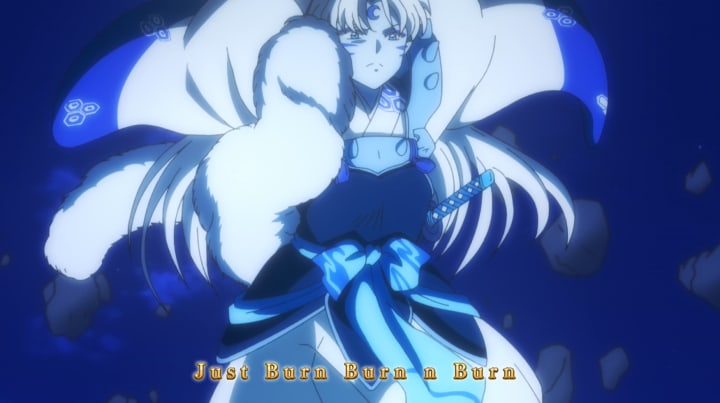


Juxtaposing this gentle and raw moment, the camera descends and Sesshomaru immediately cuts in. He wields Bakusaiga with two hands to indicate the imminent danger and strength of his opponent in this rapid-pace battle against Kirinmaru as the lyrics repeat, “just burn” while the frames begin to discolour. The camera's downward movement to transition below ground from Rin and Setsuna to Sesshomaru and Kirinmaru signal the themes of mortality and immortality: where Rin and Setsuna belong to the mortal world above ground, Sesshomaru and Kirinmaru are purely immortal, with a stronger connection towards the underworld ("below ground"). The subsequent discolouration leaves a strikingly low saturation of the next frames, exempting any shades of red – explicitly noticeable in Moroha’s Robe of the Fire Rat, Setsuna’s highlighted streak, and Towa’s demonic energy in a fit of rage, striking up towards the sky, where a demon’s eyeball resembling Roothead collects in the center. The quick cut from Rin and Setsuna’s implicit silhouettes to Sesshomaru and Kirinmaru's explicit violence is a nod to the opening lines of each episode as recited by Towa:
“Human and Demon. Peacefulness and war. Joy and sorrow. One moment and eternity. Love and hate.”

These frames in combination with the gradual discolouration and desaturation of the Yashahimes hint at a tendency to favour the latter of ‘darkness’ (that Towa recites) as opposed to the former ‘lightness’ (that Towa recites).

As such, the frame is then completely engulfed in rouge as the rainbow pearls are abruptly grasped by their respective owners. First, the scene harshly cuts to Towa and Setsuna, to be dramatized with the subsequent entrance of Moroha in the centre. The expression of all three of the Yashahimes in this serious frame starkly contrast their end frame in the first opening, “New Era.” Whereas SixTONES’ “New Era” emitted a lighthearted and hopeful cheerfulness that exuded the values of friendship, sisterhood, and renewal, NEWS’ “Burn” leaves the audience with a combination of emotions ranging from nostalgia, angst, hype, sadness, conviction, depth, and everything in between.



The change in tone marks the development of our Yashahimes as well as their discovery of the dark histories that their pasts entail, as well as the horrors of the Sengoku period and the modern era's harmony as the apex of the series' guiding theme of duality, lingering in explicit and implicit manifestations as demonstrated throughout the OP. These concepts seep into their slightest interactions and events – their entire existence is based on the duality of two raging opposites that were prophesized to contradict one another and that is the unsettling, yet exciting aspect of "Burn" that this opening grasps so accurately. Upon analyzing the entire OP as a whole, the Yashahimes smile significantly less, if barely (only in the moments with Myoga, Kaede, and Takechiyo at the beginning). Outside of those scenes, they don't smile at all. Compared to "New Era," they are consistently beaming: including the debut when they sprint, their respective introductions, under the starry night sky, leaping up subsequently, and in the end scenes, where they overlook the cliff, which strongly diverges compared to Burn's end depiction, where they grasp their pearls in pure conviction.
Alongside stellar animation, sublime duality, tasteful homages, and a widely inclusive appearance of our ensemble cast, "Burn" succeeds its predecessor to genuinely set the tone for a "New Era."

References
Serdar Yegulalp. "Sakuga Animation in Anime: Highly Stylized Sequences in Anime" via Liveabout.
InuYasha Anime:
- InuYasha ending 2: "Fukai Mori" by Do As Infinity
- InuYasha opening 5: One Day, One Dream by Tackey & Tsubasa (タッキー&翼)
- InuYasha Movie 1: Affections Touching Across Time
- InuYasha: The Final Act ending 1: "With You" by AAA (トリプル・エー)
- InuYasha: The Final Act episode 9
- InuYasha: The Final Act episode 18
- InuYasha: The Final Act episode 19
Hanyo no Yashahime
- Hanyo no Yashahime opening 1: "New Era" by SixTONES (ストーンズ)
- Hanyo no Yashahime opening 2: "Burn" by NEWS (ニュース)
- Yashahime episode 1
- Yashahime episode 4
- Yashahime episode 7
- Yashahime episode 9
- Yashahime episode 14
About the Creator
bakasaiga
she/her
Thanks for reading!

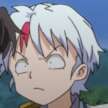


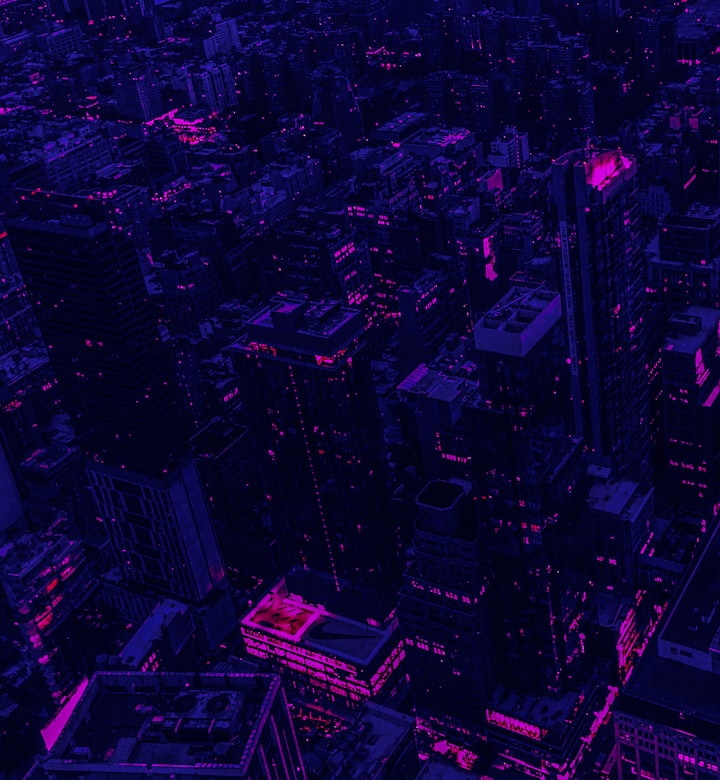

Comments
There are no comments for this story
Be the first to respond and start the conversation.